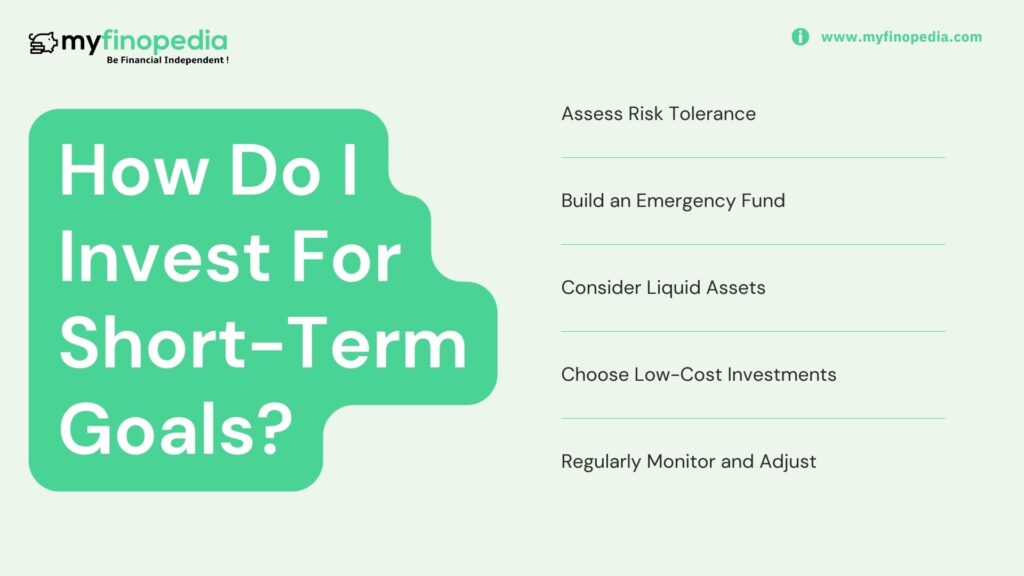Investing for short-term goals typically involves a different strategy compared to long-term investments, as you prioritize liquidity and capital preservation. Here’s a concise guide which will guide you to invest safely that too in short period.
1. First, determine your specific short-term financial objectives, such as saving for a vacation, buying a car, or covering an upcoming expense. Knowing your goals helps you set a target amount and timeline.
2. Assess Risk Tolerance-Understand your risk tolerance. Short-term investments are generally lower risk, but it’s essential to align your investments with your comfort level. Conservative investors should prioritize capital preservation.
3. Build an Emergency Fund-Before investing, establish an emergency fund with three to six months’ worth of living expenses in a high-yield savings account. This safeguards your finances in case of unexpected events.
4. Consider Liquid Assets– Opt for highly liquid investments, such as certificates of deposit (CDs), money market accounts, or short-term government bonds. These assets allow you to access your money quickly without significant losses.
5. Diversify-Even in the short term, diversification is valuable. Spread your investments across different assets or short-term investment options to reduce risk. Diversification can include a mix of cash, bonds, and other low-risk instruments.
6. Choose Low-Cost Investments-Minimize fees and expenses by selecting low-cost investment vehicles like index funds or ETFs. High fees can eat into your returns, which is especially important for short-term investments.
7. Set a Timeline– Be clear about your investment horizon. Short-term goals typically range from a few months to a few years. Align your investments with your goal’s time frame.
8. Regularly Monitor and Adjust-Keep an eye on your investments to ensure they align with your goals and risk tolerance. Make necessary adjustments as your goal approaches to safeguard your capital.
9. Tax Considerations- Be aware of the tax implications of your investments. Short-term capital gains are typically taxed at a higher rate than long-term gains. Consult a tax professional for guidance.
10. Reinvest or Withdraw– As your short-term goal approaches, decide whether to reinvest or withdraw your funds. If you need the money soon, gradually shift your investments to more liquid assets.
Remember that short-term investing is primarily about capital preservation and liquidity. While returns may be lower compared to long-term investments, the goal is to ensure that your money is readily available when you need it for your specific financial objectives.






